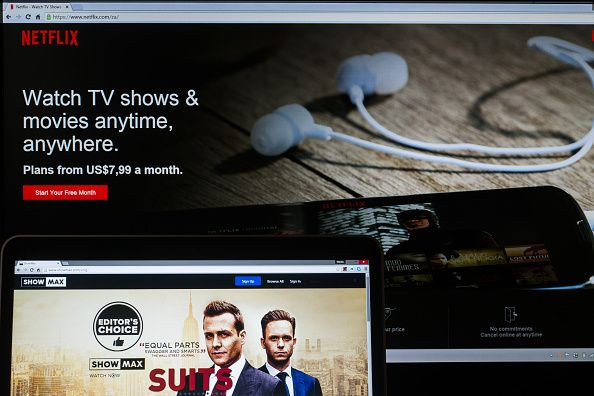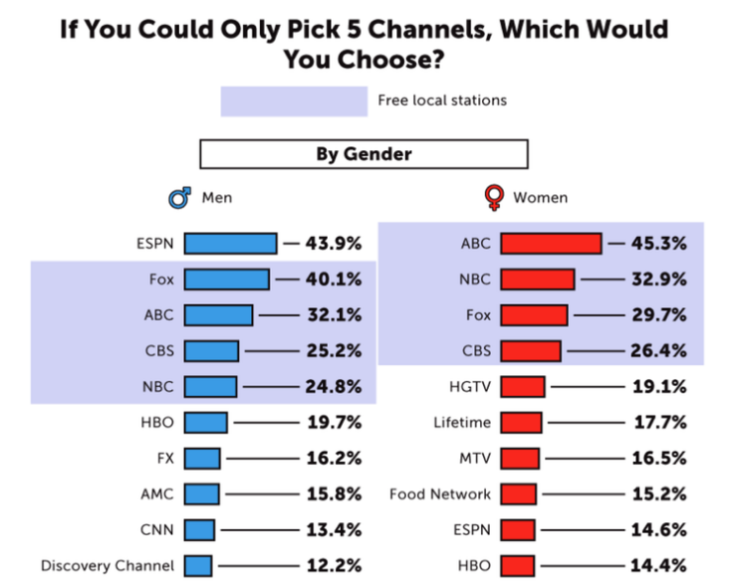Here's How Much Americans Pay For Cable Channels They Don't Watch

Bruce Springsteen famously sings about how "there's 57 channels and nothin' on." In reality, for most traditional cable customers, there's nearly 200 channels and a few things on.
The average household in the United States spent seven hours and 50 minutes a day watching TV in 2017, according to Nielsen. That's actually down from a peak of eight hours and 55 minutes in 2009, but it's still a stunning amount of time spent in front of the television.
Based on the time spent watching TV, a cable subscription actually offers a pretty good value. The problem is that most people only watch a fraction of the channels they have access to, according to a new study from Cordcutting.com, a blog dedicated to covering cord-cutting, streaming, and free over-the-air options. Stephen Lovely, a Fool.com freelancer, is the editor of Cordcutting.com.
What are people watching?
The average man reported watching 12 channels, while the average woman only watched 10. That's 5.7% of the nearly 200 channels respondents reported receiving as part of their cable packages. That makes it not very surprising that 81.9% of those surveyed felt they "wasted money on their TV bill."
Respondents spent an average of $96.18 per month, or roughly $0.50 per channel, making each channel they actually watch cost them $8.74. (That, of course, is not how cable bills work, but it does show what consumers might be willing to pay for their favorites).
That's one way to look at it, but that logic suggests that all channels are equal, and they're not. In reality, a channel like ESPN costs more than $6, while lesser channels can cost only a few cents. The reality, though, is that even if people watch mostly the most expensive channels, they're still paying for a lot of cable they're not watching.

What does this mean?
This data clearly suggests that most people would be better off cutting the cord when it comes to price, but that may mean sacrificing a favorite channel. A streaming service like DISH Sling, for example, offers access to many (but not all) of the channels above for a fraction of the cost of cable.
Given that the four broadcast networks all rate among the most popular -- and in many cases can be received over the air -- this report suggests that cord-cutting will accelerate because it's becoming easier for consumers to get what they want without cable (even if they have to use multiple providers to get it).
The negative is that as this happens, either through cord-cutting or cable companies offering skinny bundles or a la carte pricing, a lot of lesser-watched channels are going to get squeezed out of business. These channels are essentially subsidized by the cable bundle, and while they may only get a few pennies per subscriber, those pennies keep them alive.
Yes, you're wasting money -- maybe a lot of money -- on your cable bill. That will likely lead more and more people to cut the cord (or trim the cord), which will alter the cable universe. It's a case where you may not save as much as you think, because over time, subscriber loss will force even the better-watched stations to raise prices. That could create a situation where people pay a little less (not a lot) to get a lot less.
This article originally appeared in The Motley Fool.
Daniel B. Kline has no position in any of the stocks mentioned. Daniel B. Kline is an accomplished writer and editor who has worked for Microsoft on its Finance app and The Boston Globe, where he wrote for the paper and ran the Boston.com business desk.
The Motley Fool has no position in any of the stocks mentioned. The Motley Fool has a disclosure policy.





















